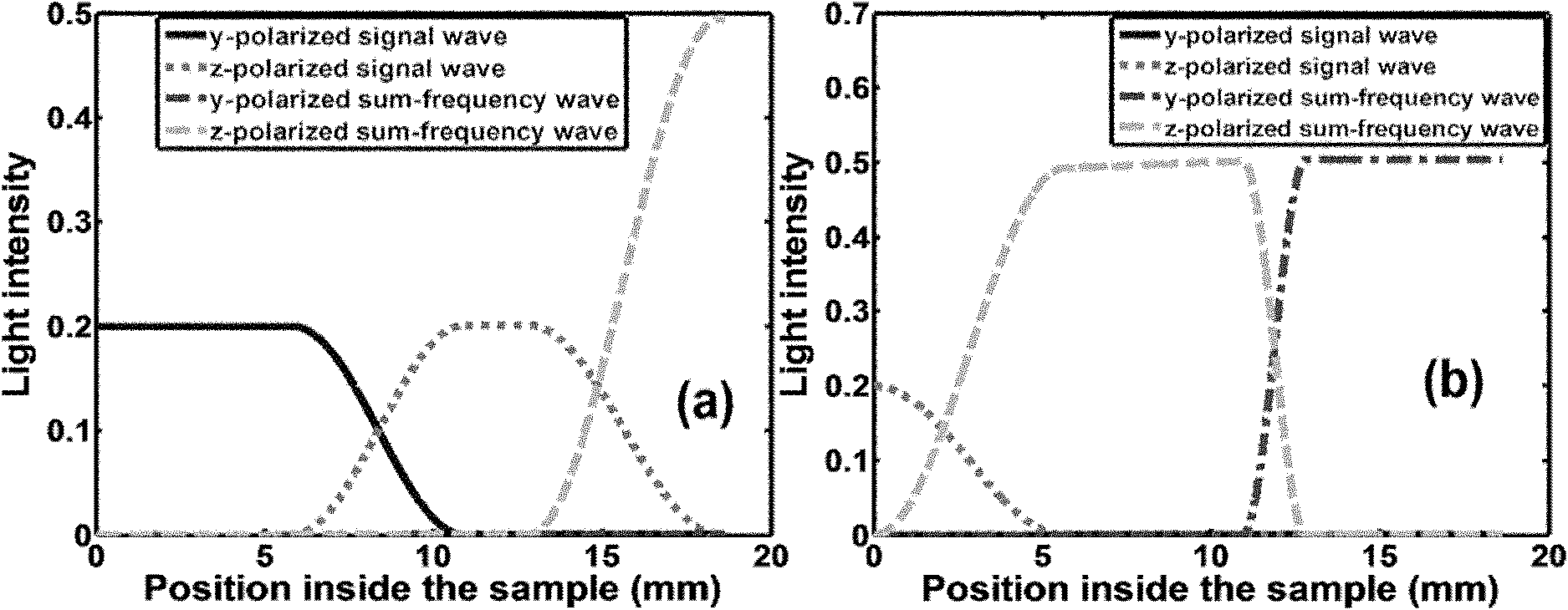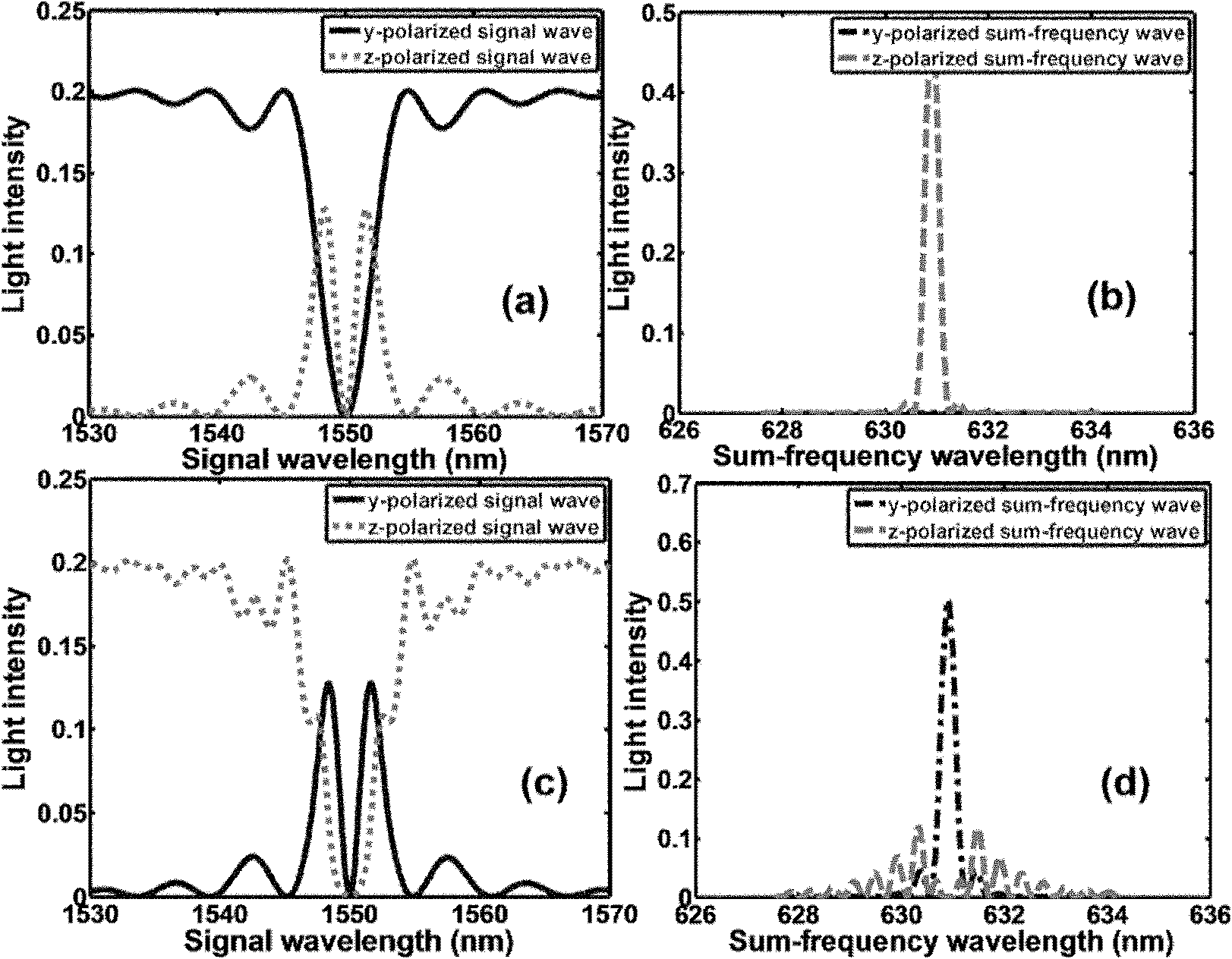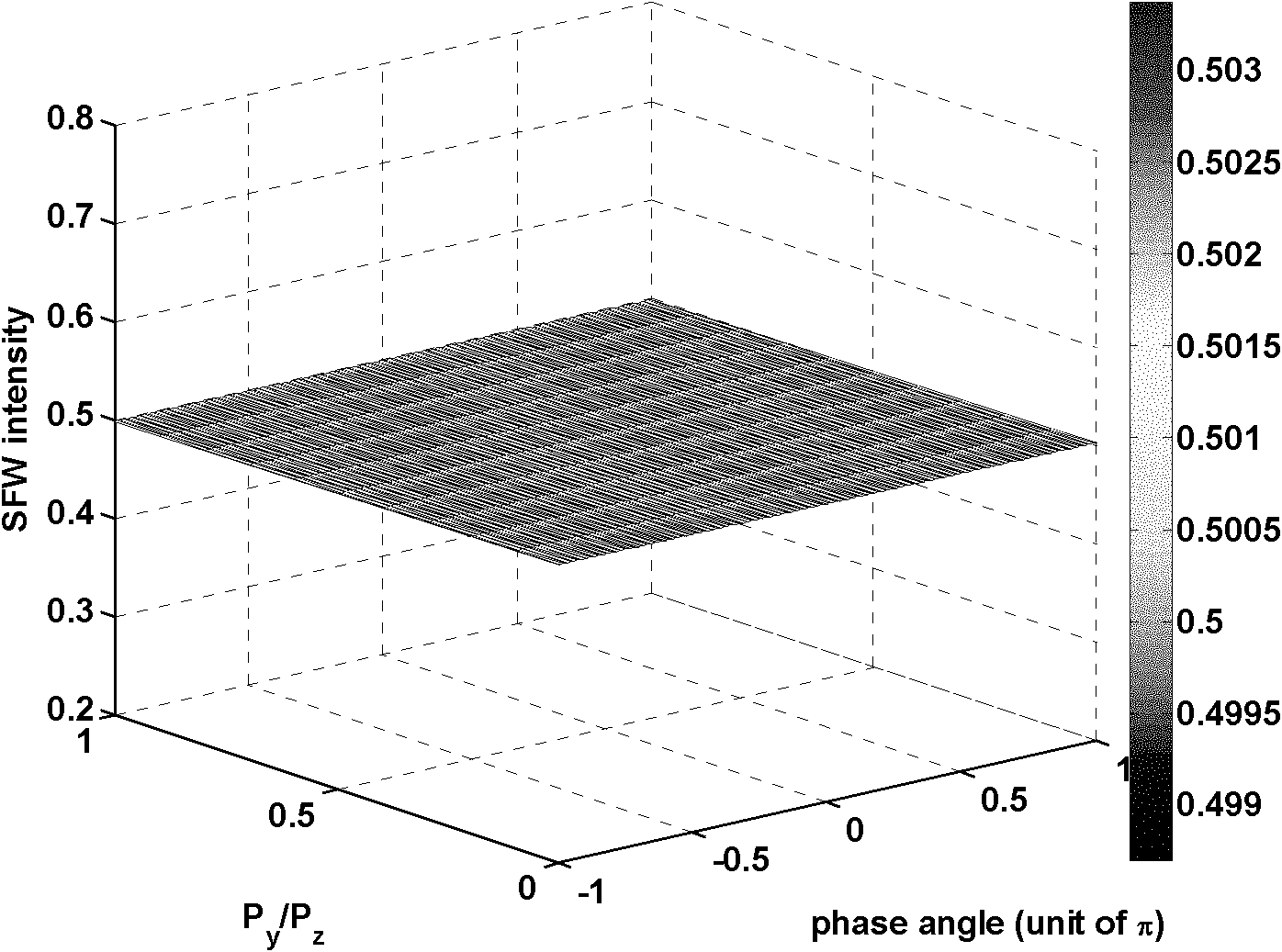Single photon detector based on polarization unrelated frequency up-conversion
A single-photon detector and frequency technology, applied in the field of optoelectronics, can solve problems such as polarization sensitivity, and achieve the effect of simple production process and completely polarization-independent effect.
- Summary
- Abstract
- Description
- Claims
- Application Information
AI Technical Summary
Problems solved by technology
Method used
Image
Examples
Embodiment 1
[0035] In order to ensure that the single photon detector works in the communication band, set the signal light wavelength to 1550nm and the light intensity to 0.2MW / cm 2 , the pump light wavelength is 1064nm, and the light intensity is 10MW / cm 2 . According to the quasi-phase matching condition, the reciprocal lattice vector provided by the periodic structure of the first and fourth parts is used to compensate the wave vector mismatch of the frequency up-conversion, setting l A =11.62μm; the reciprocal lattice vector provided by the periodic structure in the second part is used to compensate the wavevector mismatch of the polarization coupling of the signal light, setting l B =20.48μm; the reciprocal lattice vector provided by the periodic structure in the third part is used to compensate the wavevector mismatch of the polarization coupling with frequency light, setting l C = 7.27 μm. To completely convert signal light into sum frequency light, set N A =500, the length of...
Embodiment 2
[0037] In order to ensure that the single photon detector works in the communication band, set the signal light wavelength to 1550nm and the light intensity to 0.2MW / cm 2 , the pump light wavelength is 1064nm, and the light intensity is 10MW / cm 2 . According to the quasi-phase matching condition, the reciprocal lattice vector provided by the periodic structure of the first and fourth parts is used to compensate the wave vector mismatch of the frequency up-conversion, setting l A =11.62μm; the reciprocal lattice vector provided by the periodic structure in the second part is used to compensate the wavevector mismatch of the polarization coupling of the signal light, setting l B =20.48μm; the reciprocal lattice vector provided by the periodic structure in the third part is used to compensate the wavevector mismatch of the polarization coupling with frequency light, setting l C = 7.27 μm. To completely convert signal light into sum frequency light, set N A =500, the length of...
PUM
| Property | Measurement | Unit |
|---|---|---|
| Wavelength | aaaaa | aaaaa |
| Light intensity | aaaaa | aaaaa |
| Wavelength | aaaaa | aaaaa |
Abstract
Description
Claims
Application Information
 Login to View More
Login to View More - R&D
- Intellectual Property
- Life Sciences
- Materials
- Tech Scout
- Unparalleled Data Quality
- Higher Quality Content
- 60% Fewer Hallucinations
Browse by: Latest US Patents, China's latest patents, Technical Efficacy Thesaurus, Application Domain, Technology Topic, Popular Technical Reports.
© 2025 PatSnap. All rights reserved.Legal|Privacy policy|Modern Slavery Act Transparency Statement|Sitemap|About US| Contact US: help@patsnap.com



